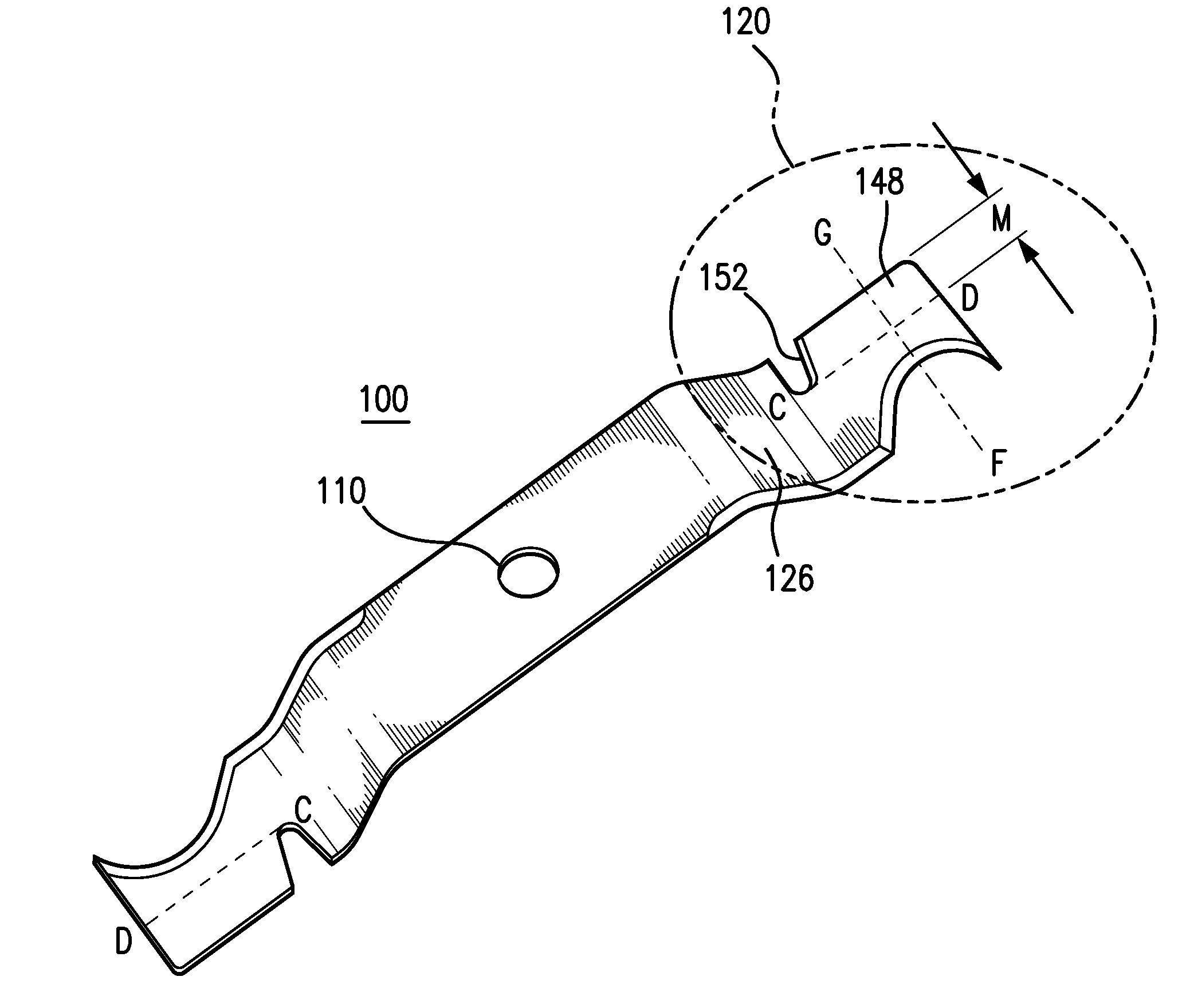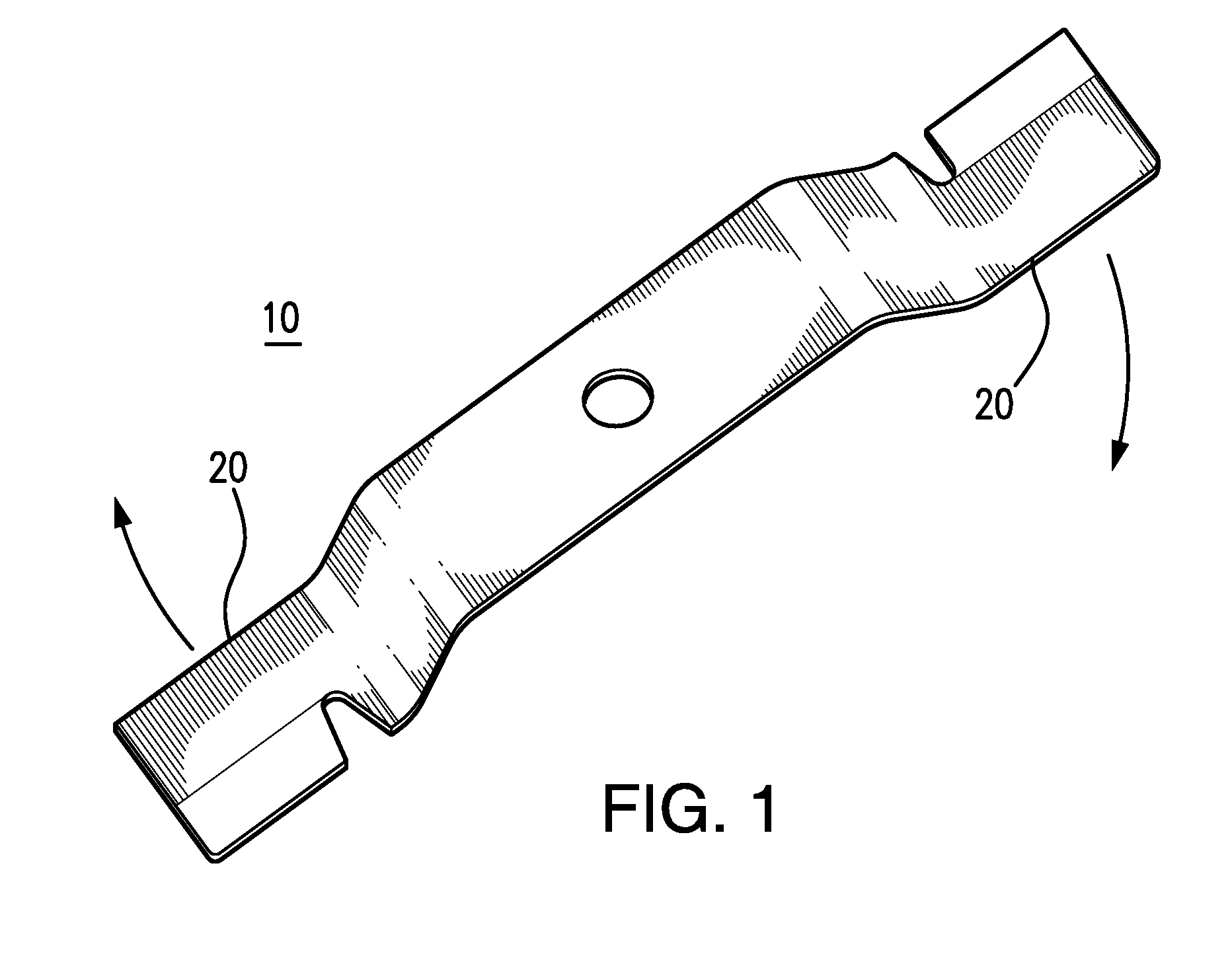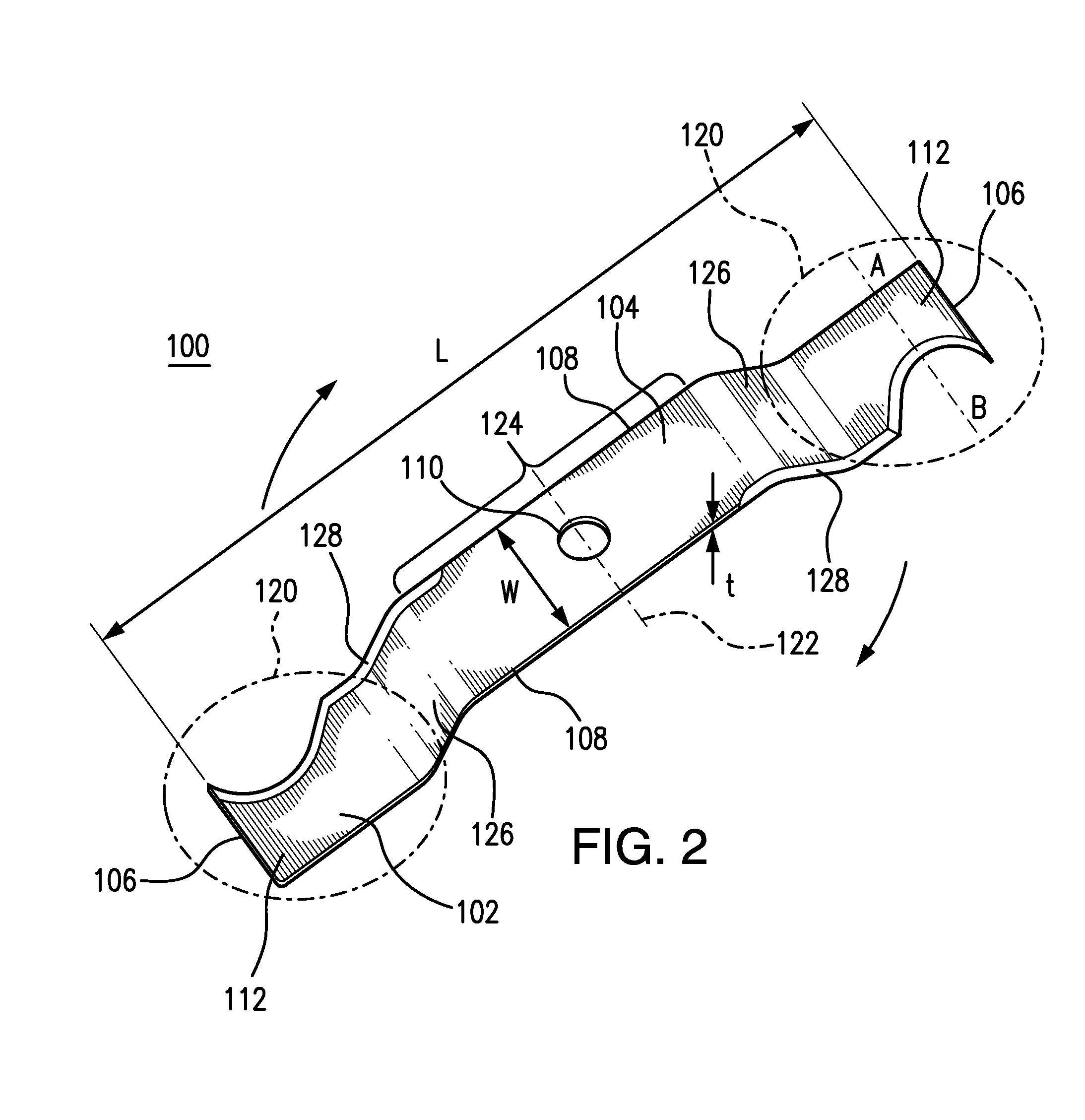Cutting Blade
a cutting blade and blade technology, applied in the field of cutting blades, can solve the problems of insufficient design of rotary mowers, insufficient angle of attack, and efforts that fail to provide a complete solution to problems, etc., to achieve the effect of improving cutting edge, improving efficiency, and being convenient to manufacture and maintain
- Summary
- Abstract
- Description
- Claims
- Application Information
AI Technical Summary
Benefits of technology
Problems solved by technology
Method used
Image
Examples
Embodiment Construction
[0040]Introduction:
[0041]There is a basic deficiency in the design of rotary mowers. It lies in the blade design and, in particular, in the way in which standard blades attack the grass. The angle of attack is extremely inefficient, as it is more like a chopping action rather than a slicing action. This can be appreciated when considering work with a kitchen knife. Slicing, or stroking the blade edge across the material to be cut, accomplishes the task of cutting with great energy savings over classic “chopping,” or driving the edge through the material to be cut in a straight downward stroke.
[0042]A chopping motion is the cutting approach used by all current rotary mowers. Their cutting edges are driven into the material, much as one drives an axe into a tree trunk. This inefficiency is demonstrated in analogous fashion by two different mandolin slicers; one having a blade edge extending perpendicular to the stroke of the material across the slicer and the other having a blade edge...
PUM
 Login to View More
Login to View More Abstract
Description
Claims
Application Information
 Login to View More
Login to View More - R&D
- Intellectual Property
- Life Sciences
- Materials
- Tech Scout
- Unparalleled Data Quality
- Higher Quality Content
- 60% Fewer Hallucinations
Browse by: Latest US Patents, China's latest patents, Technical Efficacy Thesaurus, Application Domain, Technology Topic, Popular Technical Reports.
© 2025 PatSnap. All rights reserved.Legal|Privacy policy|Modern Slavery Act Transparency Statement|Sitemap|About US| Contact US: help@patsnap.com



